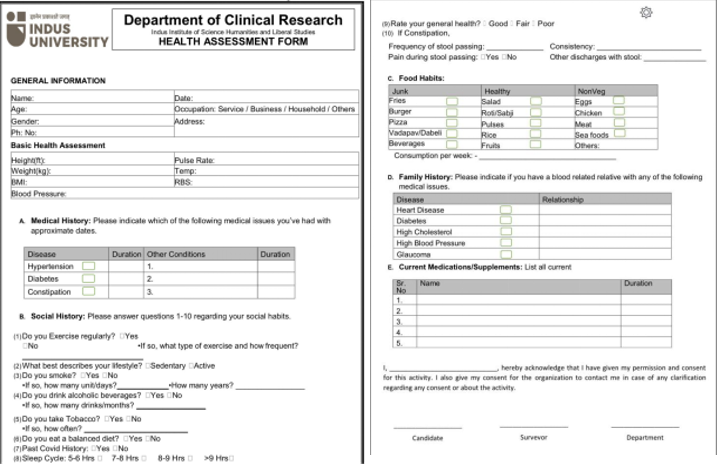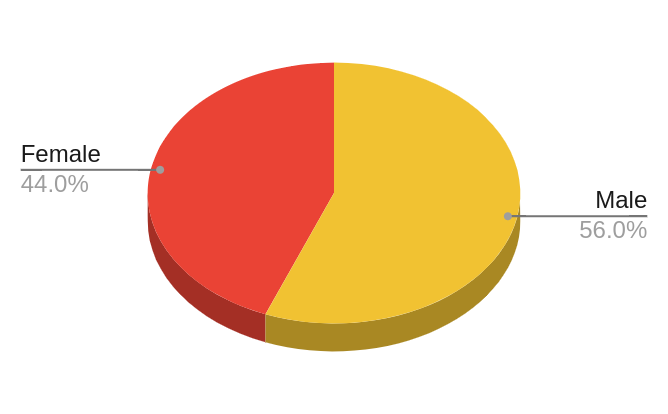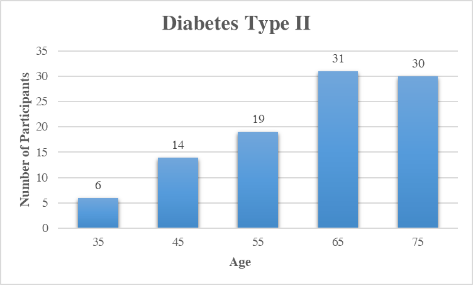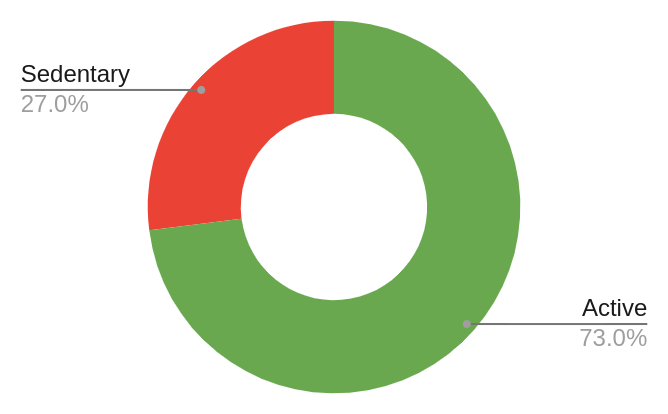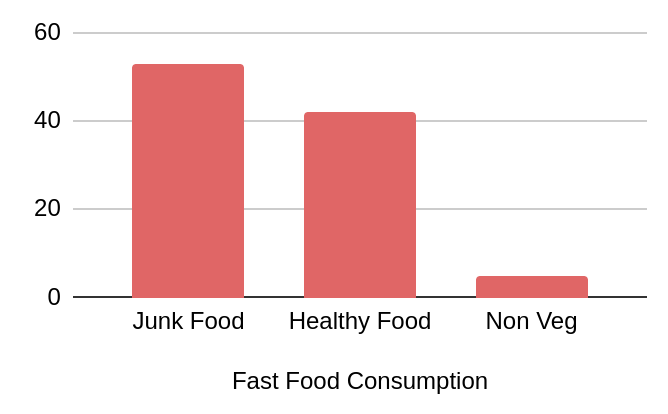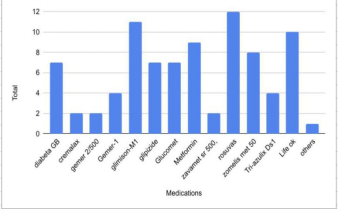Introduction
Diabetes is a long-term metabolic condition marked by high blood glucose (also known as blood sugar), which over time can seriously harm the heart, blood vessels, eyes, kidneys, and nerves. Type 2 diabetes is the most prevalent type and often affects adults. It develops when the body stops producing enough insulin or grows resistant to it.
Type 2 diabetes prevalence has sharply increased during the past three decades in nations of all income levels. Juvenile diabetes or insulin-dependent diabetes, often known as type 1 diabetes, is a chronic illness in which the pancreas produces little or no insulin on its own.
Diabetes is a long-term metabolic condition marked by high blood glucose. To stop the growth in diabetes and obesity by 2025 is a goal that has received international support. There are around 422 million people who have the disease.1
The purpose of conducting a small survey was to enhance comprehension regarding the life style patterns and management strategies employed by individuals living with diabetes.2
Objective
This survey encompassed 100 diverse cases sourced from various regions, shedding light on the life styles and associated management approaches of those individuals. It effectively displayed a spectrum of conditions ranging from relatively mild to severely critical cases, thus presenting a broad spectrum in terms of the severity of the condition.3 Through this survey, a comprehensive understanding of how different individuals cope with diabetes and the strategies they implement for managing their condition was gained, contributing significantly to the existing knowledge base in this area.4
Aim
The survey aims to thoroughly investigate type 2 diabetes, and to provide a comprehensive statistical analysis of the various common medications and treatment options frequently utilised by individuals in the general public who are affected by this particular disease
Through conducting this research, our goal is not only to deepen the comprehension of different medications but also to explore their diverse therapeutic applications. Moreover, we seek to investigate potential interactions and mechanisms of action that may occur when different drugs are combined.
Materials and Methods
Source of the data
I conducted a comprehensive door-to-door survey across various neighbourhoods in the city to gather valuable insights and opinions from residents on a wide range of topics.
Completing the questionnaire form is an essential step in providing necessary information.
Inquiring about whether they have type 2 diabetes, how long they have been dealing with the condition, the medications they are taking, their daily dietary habits, any other substances they consume, and related aspects are crucial for a comprehensive understanding of their health status.5
During the general health assessment, various parameters such as weight, height, blood sugar levels, and blood pressure will be routinely measured to ensure a comprehensive evaluation of their overall well-being.
During the conversation, inquire about their family's medical history, specifically focusing on any past occurrences of similar or different diseases.
It is important for the health care provider to be informed about any recent changes that may have occurred in their patients' current medications.6
Inclusion criteria
Clinical diagnosis of diabetes mellitus that involves evaluating various symptoms, conducting tests, and determining the presence of high blood sugar levels. 7
The age range for this category is between 35 and 75 years old.
Patients who have been diagnosed with type 2 diabetes should have had the condition for at least 6 months to be considered eligible for the study or treatment.
Management of life style, either through adopting healthy habits or by considering metformin therapy, plays a crucial role in promoting overall well-being.
All hb1ac <7.6% within the previous 3 months.
Being willing to offer one's time and energy to take part in the survey demonstrates a positive attitude towards contributing valuable feedback.
Result
According to statistical data, it has been observed that a greater number of men are affected by diabetes when compared to women, indicating a disparity in the prevalence of this health condition between the two genders.(Figure 2)10
It has come to our attention through various studies that there is a notable prevalence of diabetes among individuals ranging from 65 to 75 years old.(Figure 3)
Moreover, studies have consistently shown a strong correlation between life style choices and the development of diabetes. As a result, a significant portion of the population tends to lead more active lives that is 73% as opposed to sedentary ones that is 27%.(Figure 4)
Among the various forms of physical activity, walking has been identified as the most advantageous choice in terms of promoting health and fitness due to its accessibility, low impact on the joints, and ability to be easily incorporated into daily routines.
When it comes to managing diabetes effectively, one of the crucial elements to consider is diet and eating patterns. A vast majority of individuals prefer opting for a nutritious diet rather than consuming junk food due to its significant impact on their overall health.11, 12
From the statistical data of the diet chart, it has been observed that 55% of participants consume junk food and in comparison to that only 40% of participants consume healthy food and around 5% of them consume Non veg.(Figure 5)
Among the various medications frequently used by people, it has been observed that diabetes GB, glimison-M1, Rosuvas, and zomelis met 50 are some of the most commonly prescribed drugs for managing different health conditions, particularly diabetes.(Figure 6)
Discussion
To initiate the study, we developed a comprehensive questionnaire form that specifically encompassed two more health issues: hypertension and constipation, enhancing the breadth of our research scope.
We employed the door-to-door survey method with the aim of gathering multiple occurrences of each of the three diseases/conditions for our research study, making sure to reach out to a wide cross-section of the community to maximise data collection.
Engaging with the local population during the project provided us with a valuable opportunity to deepen our understanding of various medications and their respective therapeutic benefits, enhancing our knowledge significantly. 13, 14
For the purpose of our study, we specifically selected the vibrant city of Ahmedabad in north-central Gujarat. More precisely, we focused on exploring the distinctive neighbourhoods of Satellite, Naroda, and Odhav within this dynamic urban landscape.
In our research, we meticulously collected 85 unique cases of diabetes, examining various aspects such as demographic information, medical and social history, dietary preferences, family medical background, and the medications prescribed to each individual in our study.
The key components that play a crucial role in diabetes management can differ significantly among individual patients due to various factors such as genetic predispositions, life style choices, underlying health conditions, and overall responsiveness to treatment. 15, 16
By utilising a combination of collected cases, statistical analysis, and data segmentation, our study successfully categorised the cases based on gender and age group, while also examining the prevalence of diabetes within each demographic.
It was evident that the vast majority of individuals prioritised maintaining optimal sugar levels by adopting a nutritious diet and engaging in regular physical activities to support their overall well-being.
The way individuals used medications differed based on their specific needs and conditions. This variance was particularly noticeable between mild cases, where medication might be minimal, and severe cases, where more intensive treatment was required.
The most commonly preferred medications for individuals managing diabetes include metformin, glipizide, Gemer 1, diabetes GB, glimison- M1, Rosuvas, zomelis, Gemer 2/500, Glucomet, life ok, cremalax, and various other prescribed options catering to their specific needs and health requirements. 17, 18
Through thorough statistical analysis, we were able to accurately calculate the precise quantities of specific medications being administered in our healthcare facilities.
Conclusion
After completing the comprehensive survey on Diabetes, I feel more equipped with valuable knowledge regarding the disease, including its diagnosis and practical management strategies.
In summary, the data indicates that close to 55% of the population affected by diabetes are males, in contrast to females, who account for less than 45% of those diagnosed with the condition.
The age group between 40 to 60 years exhibits varying trends in diabetes prevalence, with fluctuations observed. Conversely, the demographic aged 60 to 80 years demonstrates a greater prevalence of individuals affected by diabetes. 19
Diabetes type 2 is commonly referred to as a "life style disorder" due to its association with high blood sugar levels caused by deficiencies in the secretion of insulin, its action, or a combination of both factors. Taking proper care of diabetes not only benefits current health but also contributes to reducing the risk of developing various other health issues in the long run. By managing diabetes effectively, individuals can potentially safeguard themselves against a range of potential health complications that may arise over time.

